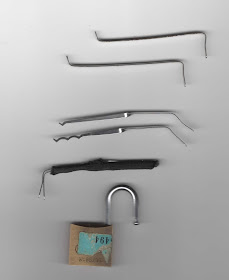Recently I have started dipping into a book called “Mindhacker” by Ron and Marty Hale-Evans. The first section I read was a suggestion that the NATO phonetic alphabet and ASL fingerspelling be taught synchronously. As will be seen, learning the two together actually helps with memorizing some of the words or signs.
Learning these systems has obvious advantages if you find yourself in high noise or low noise situations. I cover some useful hand signals in my book Survival Weapons: Optimizing Your Arsenal. ASL fingerspelling, aka American manual alphabet (AMA) provides a useful compliment to these. Potentially one can create a sort of syllabary where one or two letters stand for longer commands. For example, the sign or command “Lima” or “Lima One” would instruct a unit to adopt a skirmish line formation.
You may already know the phonetic alphabet, or at least some of it. The basic AMA system is very easy to learn. The 26 basic letters are represented by 22 symbols. Learning four to six per day is no great feat. Probably you will pick it up at a much faster rate. The next few blogs will be about learning symbols, with some commentary from Mindhacker or from myself that I hope may help make learning them easier.
Fingerspelling is not sign language. It is a supplemental system useful for when a sign is not known or does not exist. There is a British fingerspelling system, incidentally, but this needs both hands to make many letters so the AMA system has the edge for our purposes.
The conventions when using AMA are:
Alpha/ Alfa: This is a clenched fist with the thumb at the side pointing upwards. There a number of signs based on the clenched fist and the position of the thumb is important. Mindhacker suggests this sign is remembered by thinking of an Alpha male rising their hand in triumph.
Bravo: Bravo is the open palm. Remember is as though you are going to applaud while crying “bravo, bravo!” Folding the thumb across the palm makes it look more like a “b”.
Charlie: Charlie is the hand forming the letter “C” so no complex aide memoir are really necessary. Since the sign is directed towards the viewer the open side of the symbol is inwards.
Delta: Delta is the upraised index finger. Mindhacker suggests you imagine pointing up at a Delta-winged plane above.
Echo: Echo is best thought of as a semi-clenched fist, as though you are holding something. The thumb is under the fingers, which I suppose does somewhat resemble an “e”. This symbol may be easier if you place the tip of the thumb on the fingernail of the little finger.
Foxtrot: The hand form usually shown for Foxtrot seems to resemble the sign for the number “9”. Mindhacker seems to suggest the symbol resembles the “OK” gesture and that the phrase “The judge in the dance contest thought your Foxtrot was magnifique!” helps. South African (and Irish) fingerspelling seems to use a modified sign where the Forefinger is bent at 90 degrees to make an “f”-like shape. Personally I think that is a much better symbol and worth wider adoption.
If you have enjoyed this article or it has been helpful to you please feel free to show your appreciation. Thank you.
The Books





























